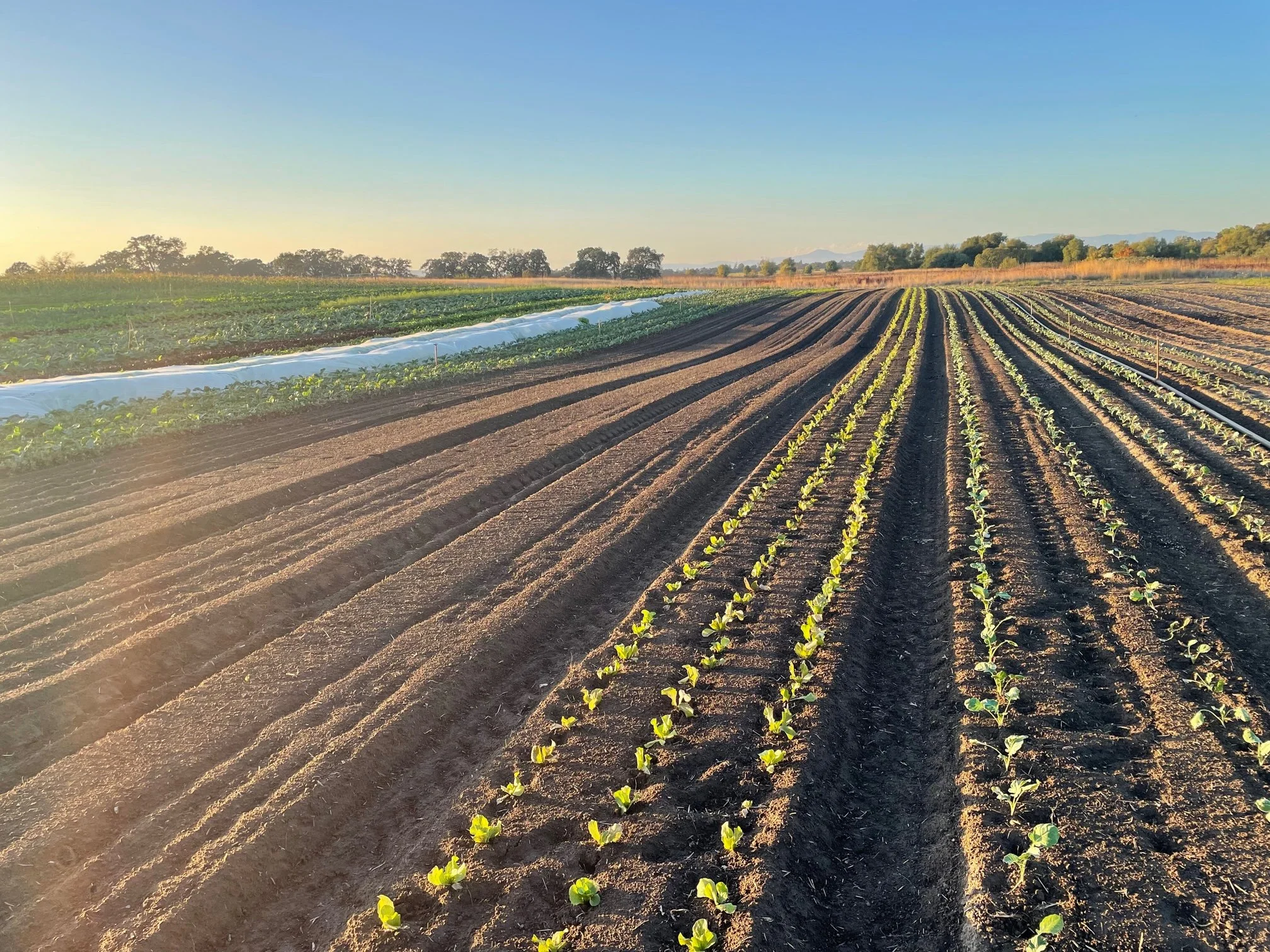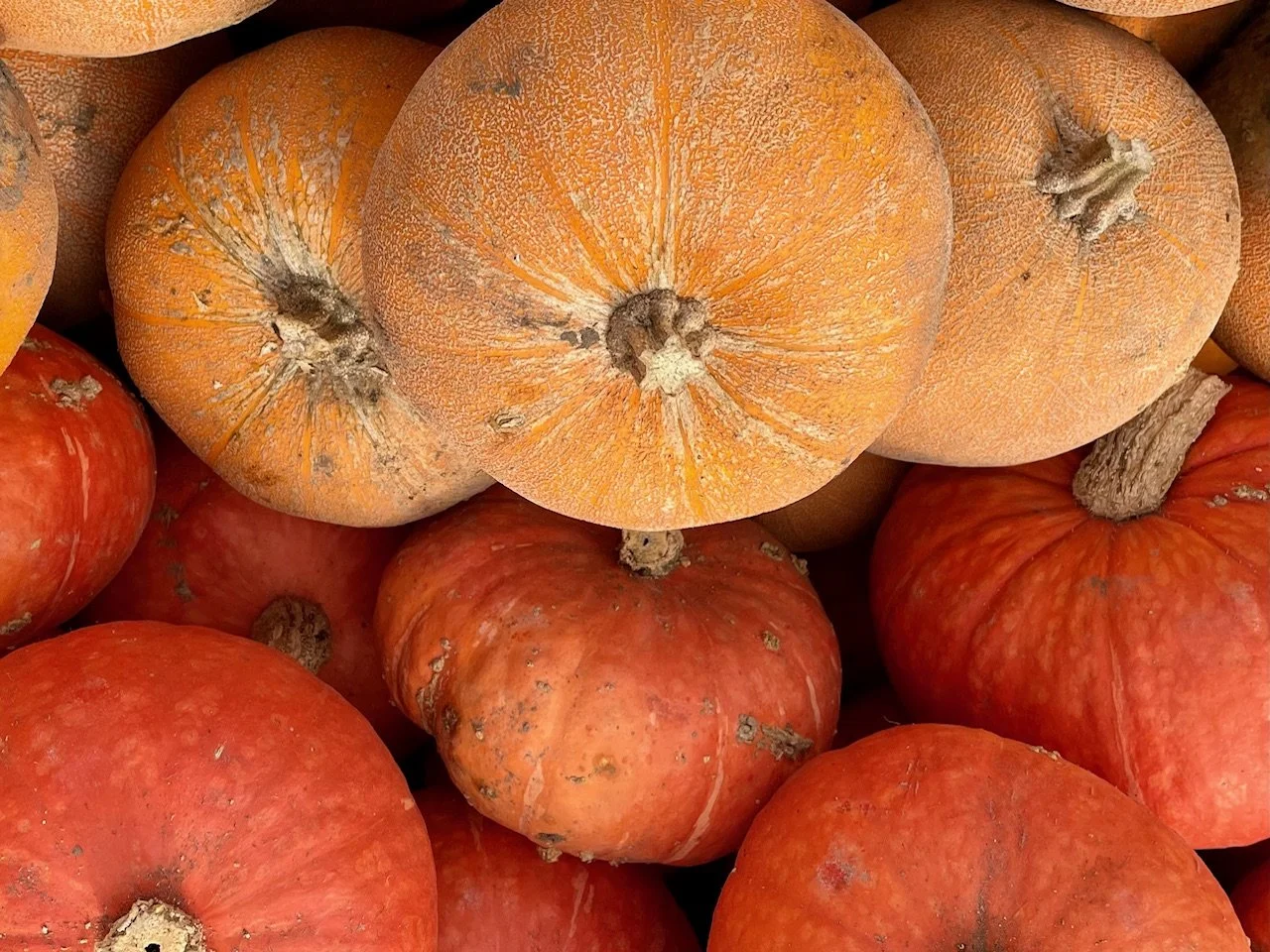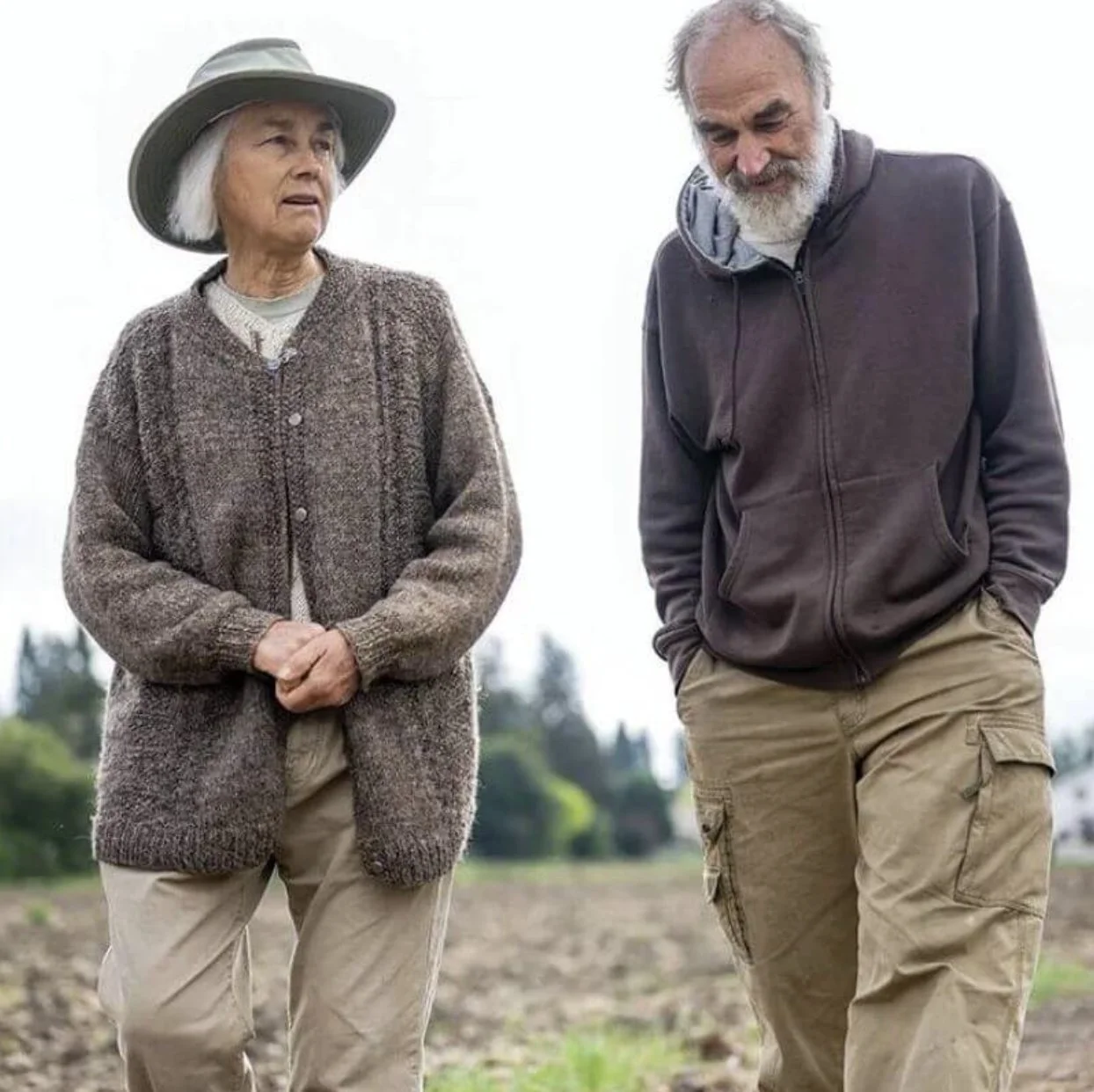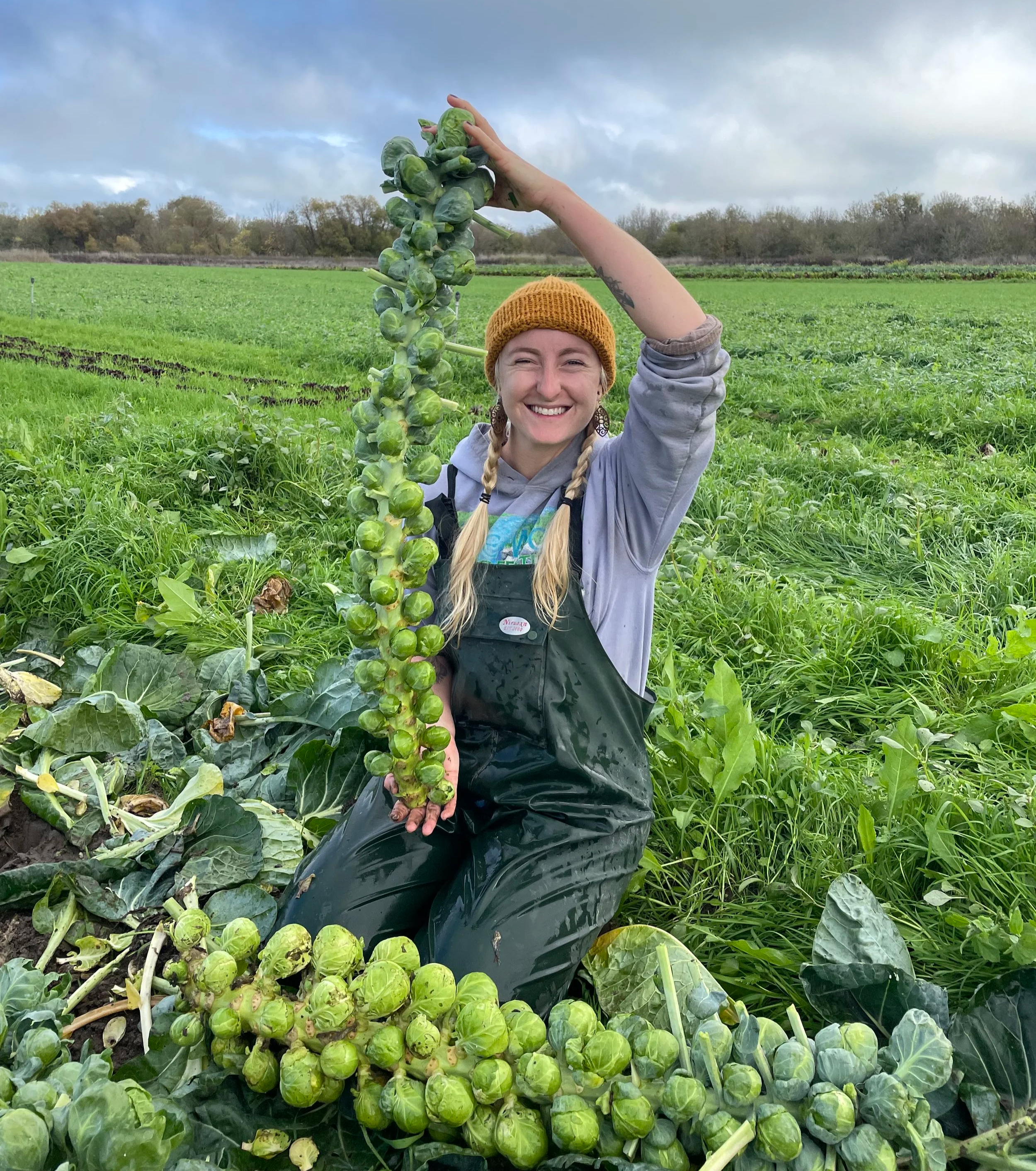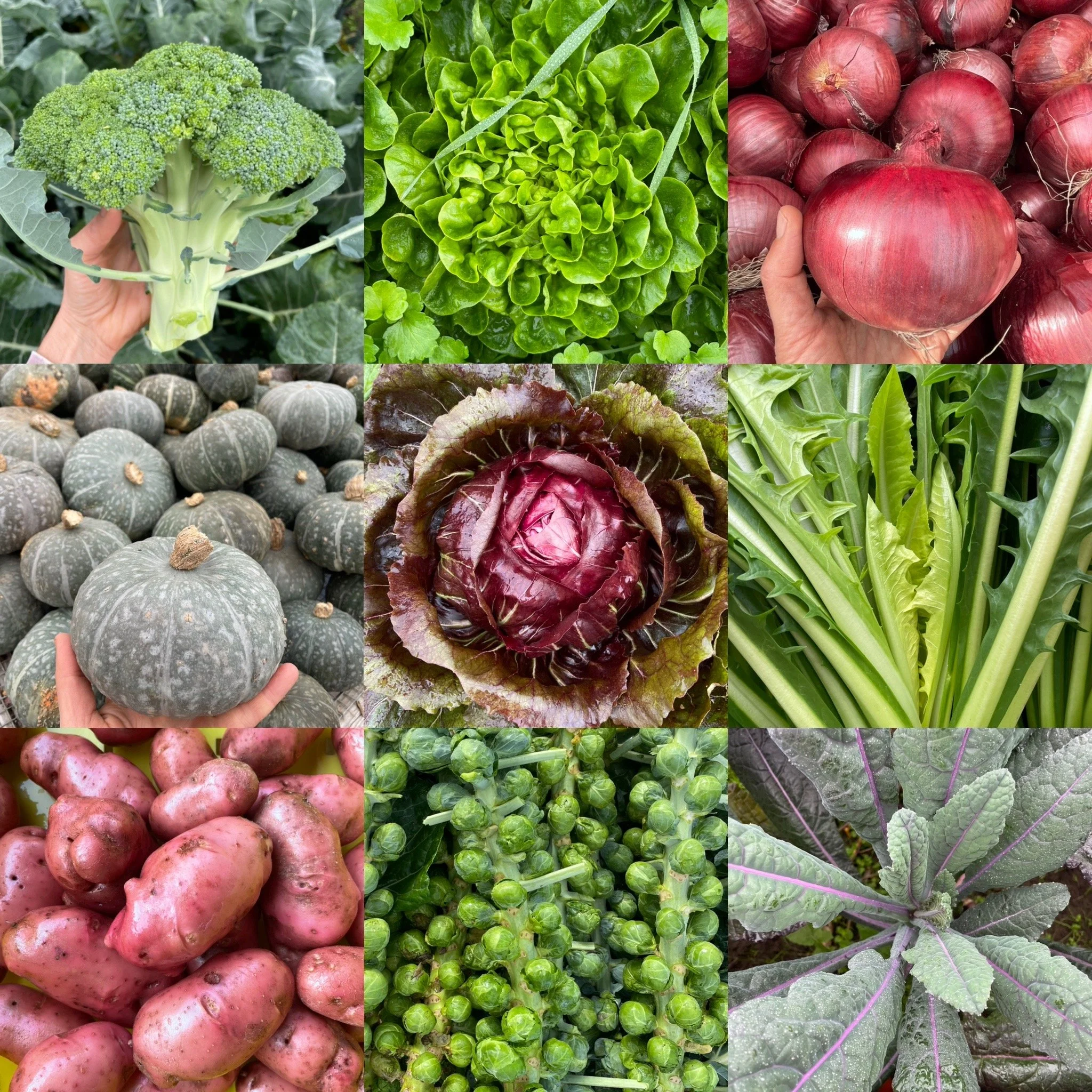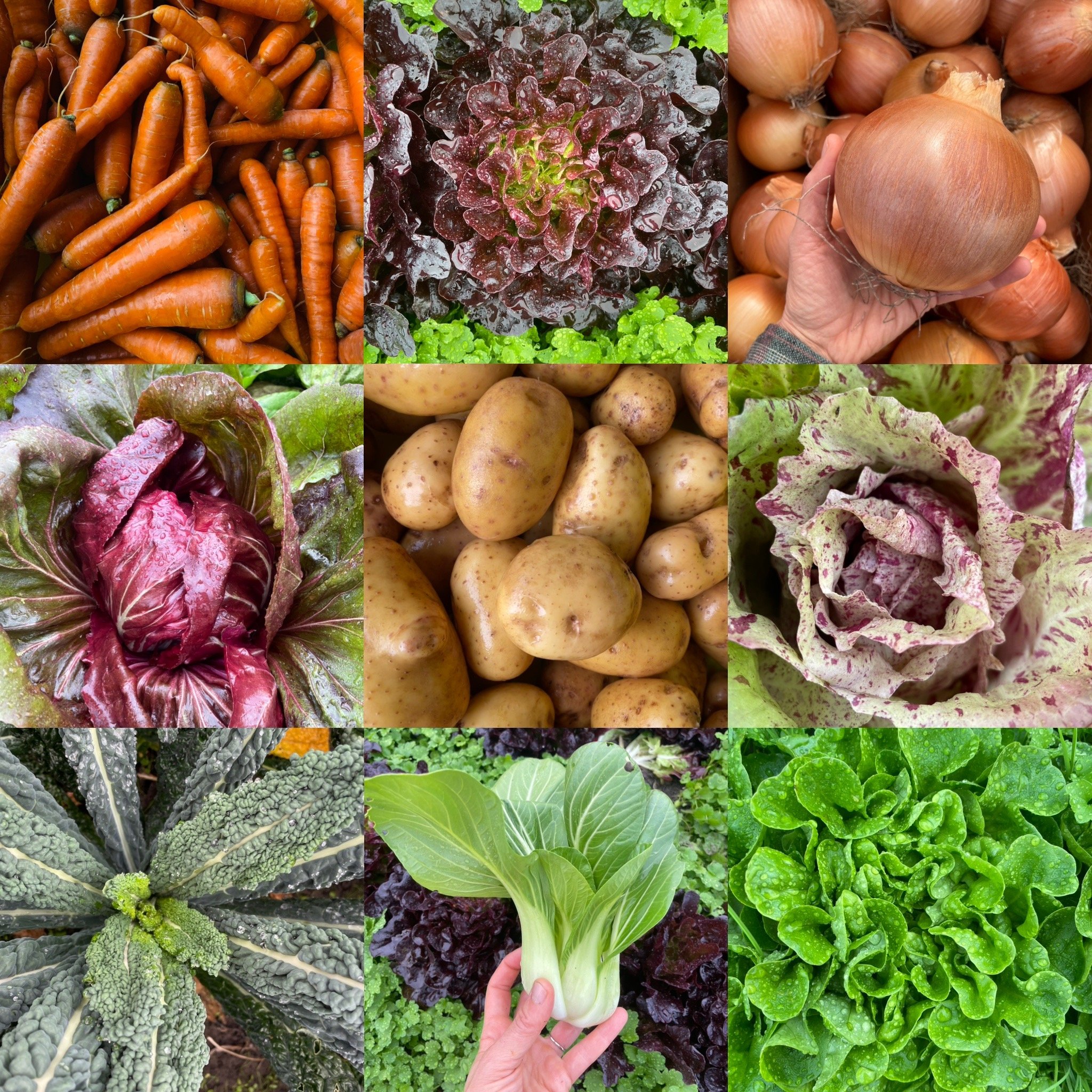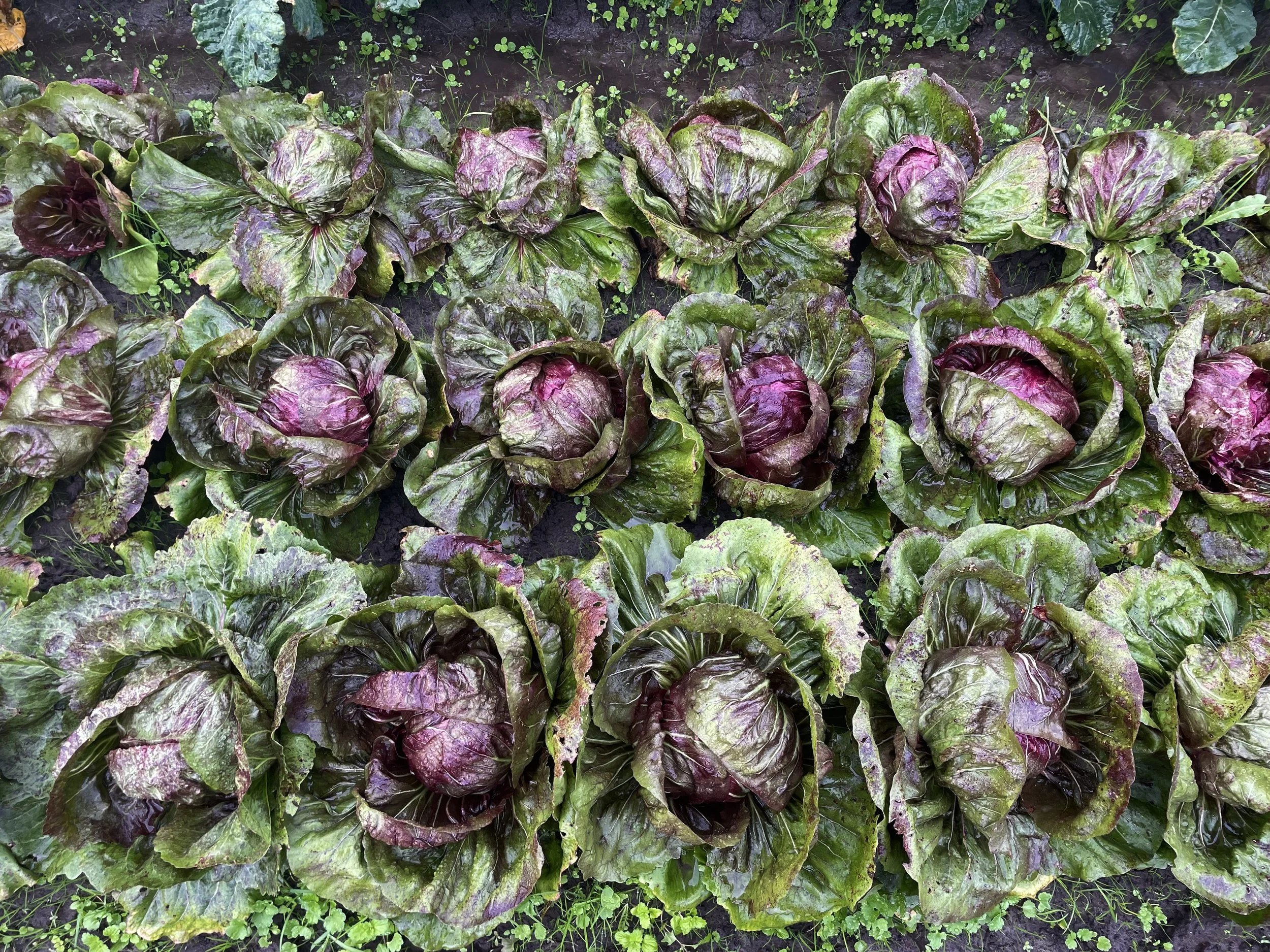THIS WEEK’S HARVEST
Make sure to bring an extra bag this week! We’ll be offering an abundance of out-of-bag items to make sure you have a bounty for Thanksgiving.
Garlic, Butternut Winter Squash, Winter Luxury Pie Pumpkin or Sunshine Kabocha, Beets, Celeriac, Brussel Sprouts, Harvest Moon Potatoes, Jelly Potatoes, Baby Celery, Watermelon Radish, Calibra Yellow Onions, Monastrell Red Onions, Carrots, Black Magic Dino Kale, Indigo Radicchio, Red Salanova Butter Lettuce, Green Salanova Oakleaf Lettuce
U-PICK
Check the u-pick board in the barn for weekly u-pick limits.
Frying Peppers:
Shishitos | Gleanings
Padróns | Gleanings
Hot Peppers:
Jalapeños | Gleanings
Habanero | Gleanings
Thai Chilis | Gleanings | Spicy!
Wilson’s Vietnamese Devil Pepper | Gleanings
Flowers! There are still some flowers to be had after the rains, particularly zinnias, marigolds (the solid orange ones are all the way to the north — towards Winter Sister Farm) and some late-season curios.
HARVEST NOTES
Winter Luxury Pie Pumpkin: Our most beautiful pumpkin! Winter Luxury are gorgeous — light orange and covered in delicate lace netting. They are the perfect pie pumpkin — flavorful, sweet and light. Kabocha squash, also offered this week, are also exceptional for pumpkin pie. A pie with Kabocha will tend to be a tiny bit denser, sweeter and more flavorful, while Winter Luxury will bring a lightness and delicacy of flavor.
Celeriac: Also known as Celery Root, Celeriac is a traditional European winter vegetable with smooth white flesh that is packed with pure celery flavor. It’s incredible as a component of mashed potatoes or soups, and can also be roasted or eaten raw. We’ve also heard legend that celery root fries (i.e. deep fried celery root sticks) are the best thing ever. For a more refreshing take, Celery Root can be grated or julienned into a fresh salad of apples and a creamy or mustardy dressing.
WINTER LUXURY PUMPKIN PIE
Recipe by Yossy Arefi from Sweeter off the Vine
We were delighted this year to come across a pumpkin pie recipe written specifically for our favorite variety (thanks Kate!) and featuring the unbeatable combination of crème fraîche and maple syrup. If you’ve fallen in love with our old go-to pumpkin pie recipe (delicious made with Winter Luxury or Sunshine Kabocha), you can find it in a past year’s newsletter here. Whichever recipe you choose, we hope the flavor of the fresh ingredients helps it shine.
Makes one 9-inch pie
ALL BUTTER PIE CRUST
2 2/3 cups (340g) all purpose flour
1/2 teaspoon salt
1 cup plus 2 tablespoons (255g) unsalted butter, cold and cut into cubes
8-10 tablespoons ice water
1 tablespoon apple cider vinegar
To make the crust, combine the flour and salt in a bowl, cut the butter into 1/2-inch cubes, and add the apple cider vinegar to the ice water.
Working quickly, add the butter to the flour and toss to coat. Then use your fingers or the palms of your hands to press each cube of butter into a flat sheet. Keep tossing the butter as you go to ensure that each butter piece is coated with flour. The idea is to create thin, flat shards of butter that range from about the size of a dime to about the size of a quarter. Sprinkle about 6 tablespoons of the water over the flour mixture and mix gently. If the dough seems very dry, add more water a couple of teaspoons at a time.
You have added enough water when you can pick up a handful of the dough and squeeze it together easily without it falling apart. Press the dough together, then split it in half, form into discs and wrap each disc in plastic wrap. Chill the dough for at least one hour before using, or overnight, for the best results.
WINTER LUXURY PUMPKIN PIE
2 cups (450g) roasted Winter Luxury pumpkin purée
3/4 cup Grade A maple syrup (the former Grade B)
3/4 cup heavy cream
1/2 cup (112g) crème fraîche
3 eggs, lightly beaten
1 teaspoon vanilla extract
3/4 teaspoon cinnamon
1/4 teaspoon allspice
1/8 teaspoon nutmeg
1/2 teaspoon salt
Position a rack in the lower third of the oven and preheat it to 425ºF.
BLIND BAKE THE CRUST
On a lightly floured surface, roll out the pie dough into a roughly 12-inch circle about 1/8- inch thick. Place it into a 9 or 10-inch pie plate fold the edges under and crimp. Dock the crust with a fork. Chill the formed crust in the freezer for 15 minutes or until very firm. Line the chilled crust with a piece of parchment paper and fill with pie weights or dried beans. Slide the crust into the oven and bake for 15 minutes or until the edges are golden and crisp. Carefully remove the parchment paper and weights then bake the crust for 10-15 more minutes or until light golden all over. If the crust puffs up at all while baking gently press it back into the pan with an offset spatula or fork. Let the crust cool slightly while you prepare the filling.
Turn the oven down to 350ºF.
Whisk all of the filling ingredients together until well combined. Then strain the mixture through a fine mesh sieve for maximum smoothness.
Put the baked pie shell on a baking sheet, then pour the filling mixture into the shell. (If you are concerned about over filling the pie shell, bake any extra filling alongside the pie in buttered ramekins until it puffs slightly in the center.) Slide the pan into the oven and bake until the filling is slightly puffed and the center wiggles just slightly when you shake the pan, about 30 minutes. Cool the pie completely before serving with a dollop of whipped cream.
HELP SAVE tierra vegetables
Many of you may be familiar with Tierra Vegetables — the beloved Windsor farm established in 1980 by brother and sister farmers Lee and Wayne James. Over our years of farming in Sonoma County, Lee and Wayne have provided so much support, inspiration, and mentorship. They’ve shared what they know about growing heirloom corn and allowed us to use their specialized and hard-to-find small farm equipment to process our dried corn each year.
The farm has been run on leased land for the entirety of its existence, and now, in order to continue existing, and to preserve the land for farming into the future, they face a hard deadline — the Sonoma County Agriculture and Open Space District which owns their farmland, needs them to purchase it by the end of the year. They’re currently asking for help from the community to raise $200,000 by December 1st, and they’re more than halfway there.
If you feel moved to donate or share, you can find their fundraiser here.
FARMER’S LOG
In honor of this nice rainy fall we’ve been having, and to get some rest ahead of this big Thanksgiving harvest week, tonight we will leave you with a poem by Ursula K. Le Guin, daughter of California.
TO THE RAIN
by Ursula K. Le Guin
Mother rain, manifold, measureless,
falling on fallow, on field and forest,
on house-roof, low hovel, high tower,
downwelling waters all-washing, wider
than cities, softer than sisterhood, vaster
than countrysides, calming, recalling:
return to us, teaching our troubled
souls in your ceaseless descent
to fall, to be fellow, to feel to the root,
to sink in, to heal, to sweeten the sea.
See you in the fields,
David
CSA BASICS
Slow on Cooper Road! Out of respect for our neighbors and the many kids and animals that live on Cooper Rd., please drive slow (20 mph)!
What time is harvest pick-up?:
Saturday harvest pick-ups run from 9:00 am - 2:00 pm
Tuesday harvest pick-ups will run from 1:00 pm - 6:00 pm
U-pick hours: Oriented members can come to the farm any time, 7 days a week, sunrise to sunset, to u-pick and enjoy the farm.
2025 CSA program dates: Our harvest season will run from Saturday, June 14th through Tuesday, December 9th this year.
Where is the farm? The member parking lot is located at 1720 Cooper Rd., Sebastopol, CA 95472.

